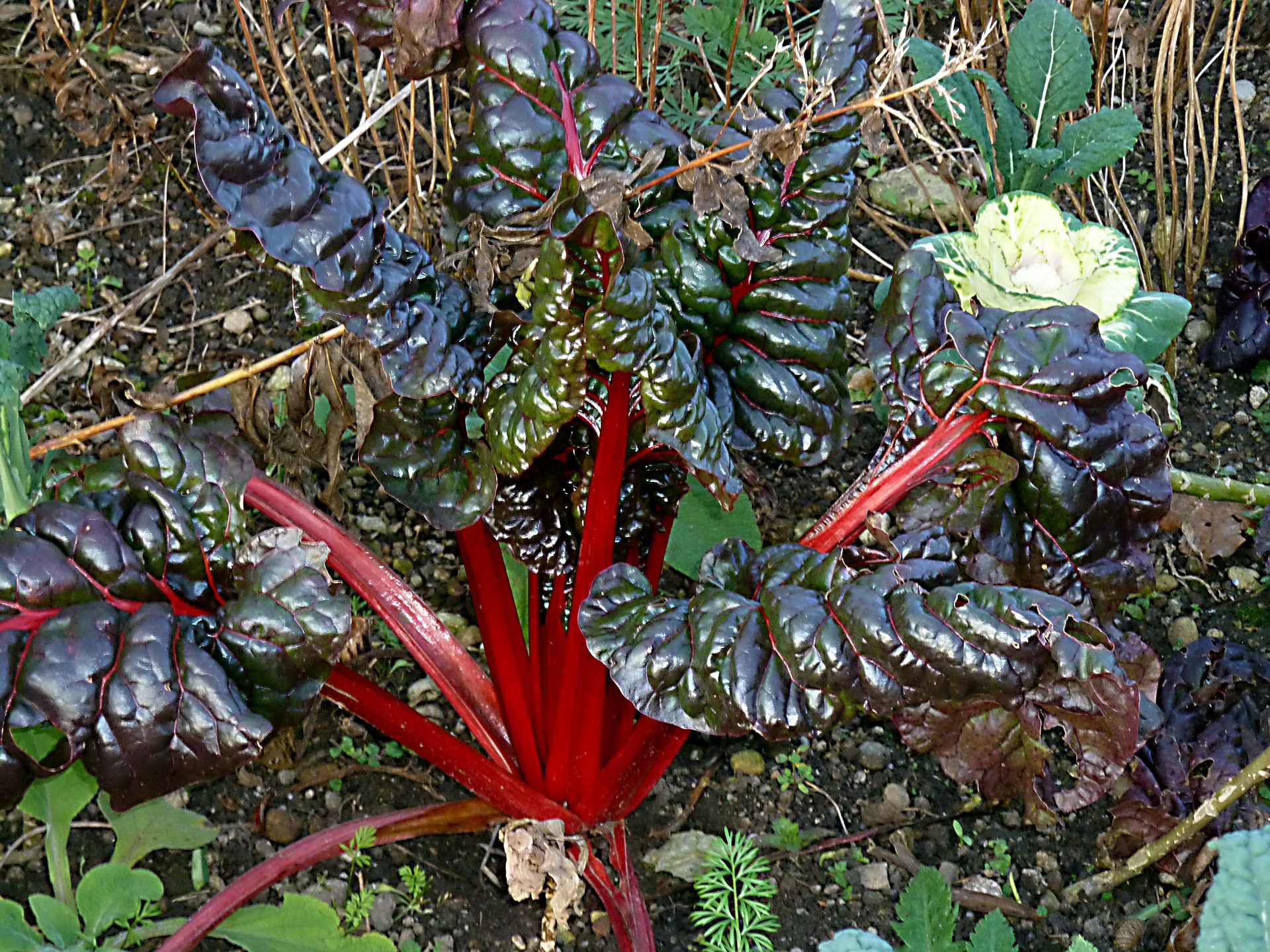Rhubarb is an odd and beautiful vegetable. It has a strange way of birthing it’s leaves by unfurling bright green and pink balls from within the ground. Rhubarb is a perennial and one of the first garden vegetables to emerge every spring. It takes up a lot of space, but is very low maintenance and attractive, making it a wonderful choice for an edible landscape or perennial garden.
When to plant: Rhubarb can be planted from crown division or started from seed in the spring. Divisions can also be taken from 5 year old plants in the fall.
Where to plant: A corner out of the way in sun to part shade is perfect.
Companions: Columbines, Garlic, Onions, and Beans.
Spacing: Plants should be spaced 3-4 feet apart. It seems like a lot of space, but they really do get huge. The leaves themselves can a foot or more wide.
Care: Rhubarb is very low maintenance. It doesn’t care too much for extreme heat and drought though, so a good mulch around the plants should help conserve moisture, keep the root area cool, and add soil fertility. When winter sets in a good thick mulch over the plants will protect them for the cold season and build up the soil further, making fertilizer unnecessary.
Harvest: Stems can be taken from mature plants from April-October. The heaviest harvest should occur in the spring though, with lighter harvest into fall. Usually, 3-5 stems per plant can be cut at one time. To cut the stems from the plant, use a sharp knife and make the cut near the soil level. Remove the leaves and add to them compost pile. Rhubarb sends up rather impressive seed head mid-spring. Unless you want to save seed, it is recommended that you cut these down so that the plants can put all of their energy into producing new shoots.
Aren’t the leaves poisonous? Yes, the leaves contain Oxalic Acid. But you don’t eat the leaves, you eat the stems. However, the leaves can be boiled down to make a garden spray that can be used on seed beds of brassicas (cabbage family) to prevent clubroot. The spray can also be used on roses to prevent aphids and black spot.
To find an assortment of locally produced food and farm items nationwide, check out Pick-A-Pepper.com!
Photo Credit : http://homestyle.freedomblogging.com/2012/05/03/edible-landscapes/2319/
Similar Stories:
- IN THE PINK: FORCED RHUBARB
- 20 Perennial Crops to Plant Now and Enjoy For A Lifetime.
- 15 Vegetable Crops To Start Planting for Fall
- 2 Ways To Use Poisonous Rhubarb Leaves
- How To Grow Stevia and Make Your Own Extract




